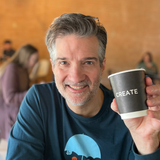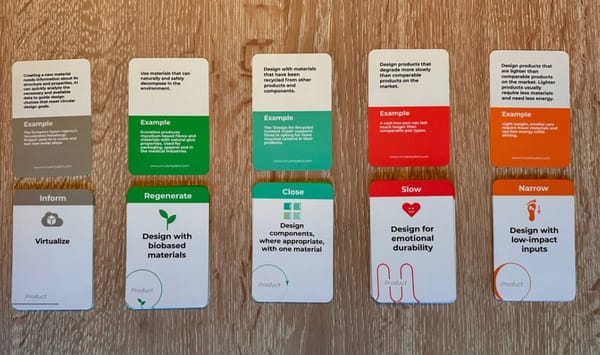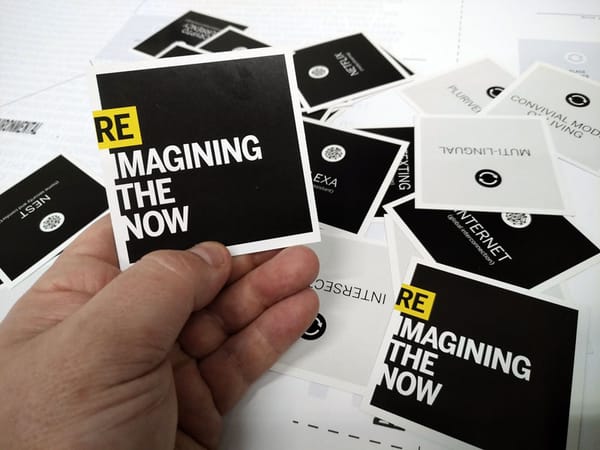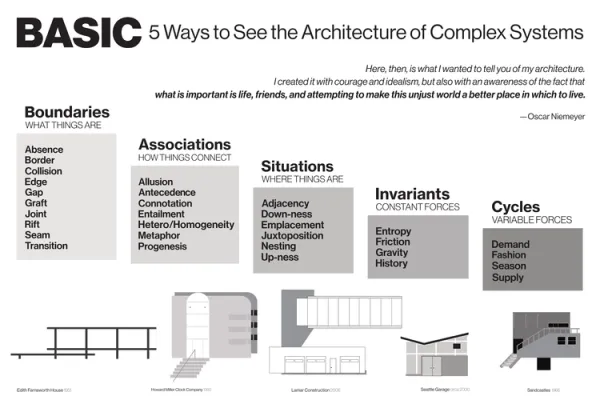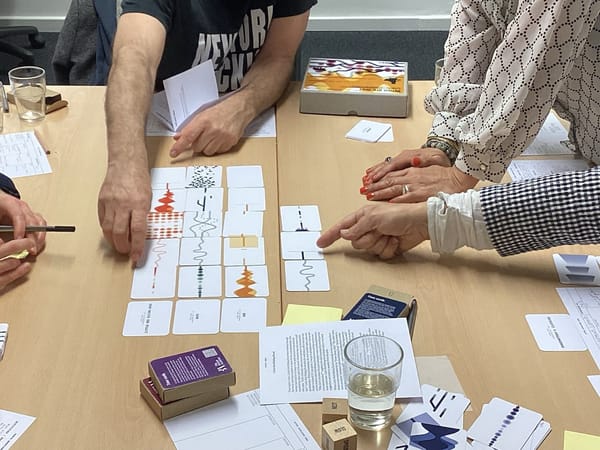№ 88 | Flipspark, City Making 101, Adventure Playgrounds, 🌀 How To Speak Squiggly! 🌀, AfroRithms From The Future, The Great Cognitive Depression, and The Periodic Table of Questions and Connection
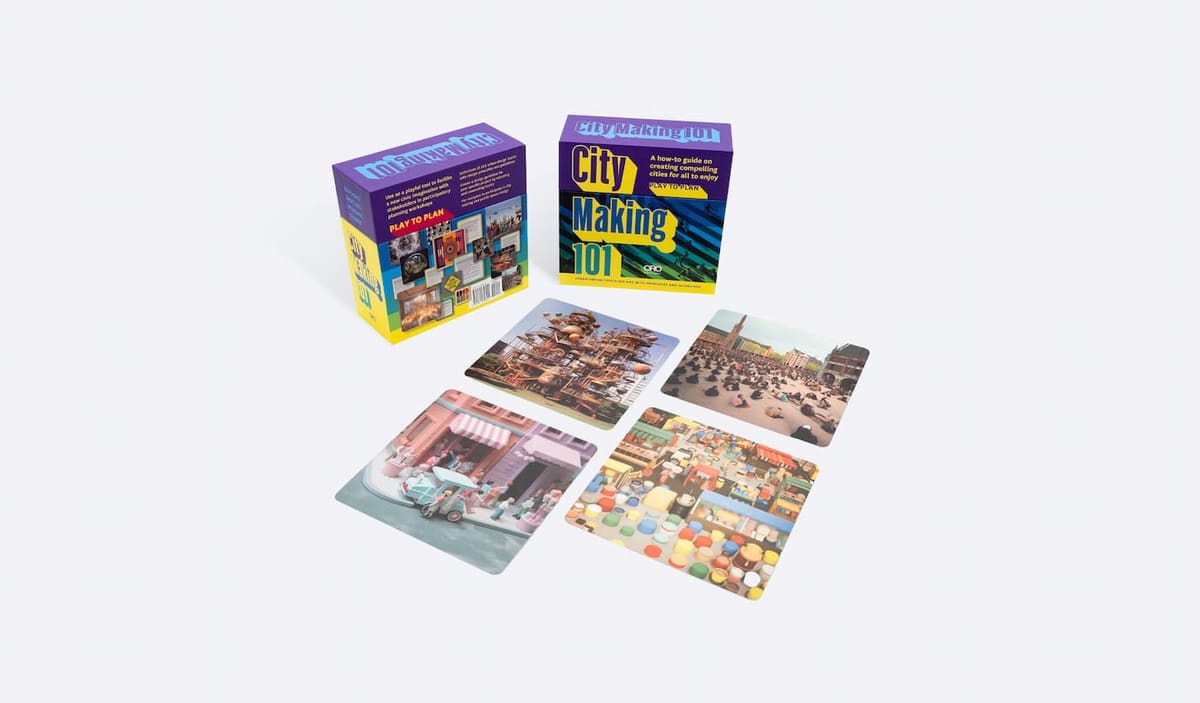
More playful things to think with. Though, this issue is a wee-bit longer, given that two of my “finds” this time are articles to think about, and not strictly ‘things’ to think with.
I’m prepping for the 15th anniversary reprint of the Mental Notes card deck; I’m looking for testimonials—a sentence or two about how awesome the card deck is… Or maybe how you’ve always wanted your own copy. Anything I can sprinkle into a Kickstarter page to convince others that this is certainly, without a doubt, something they should back! [Cough, social proof! 🤪] If you own a deck (or have longed for one), and have some kinds words I can include, shoot me an email; you can reply to this newsletter email and it should go directly to me!).
Flipspark
A card game… for your music studio?! 🤪
By randomly sifting cards and combining them you are prompting yourself to try different combinations of instruments, patterns, and effects, for any given element
Initially, I was reluctant to share the flipspark cards, if only because it’s such a niche thing. But… something about this ‘find’ sparks joy for me, a heuristic I listen for when curating this newsletter! And then I watched the overview video, and saw ✨card patterns✨ that could be easily transplanted to other domains (watch the intro video—notice the visual treatment of melodic and drum based elements, and how subsequent cards map back to these two distinct elements! 🤩).
City Making 101
City Making 101 is a role-playing and debate-focused card game for “designers and ‘citizen designers’ to imagine, discuss and share ways to realize livable, lovable and walkable cities.” I’m in! The deck consists of 5 persona cards, followed by 101 topic cards, with topics for discussion ranging from signage to advertising to playgrounds to community gardens. Players take turns role-playing their persona, and classifying various proposals into categories of relative importance. Then, through debate and discussion, players experience the complexity of city planning. Through structured play, “players gain a base of knowledge about city design.”
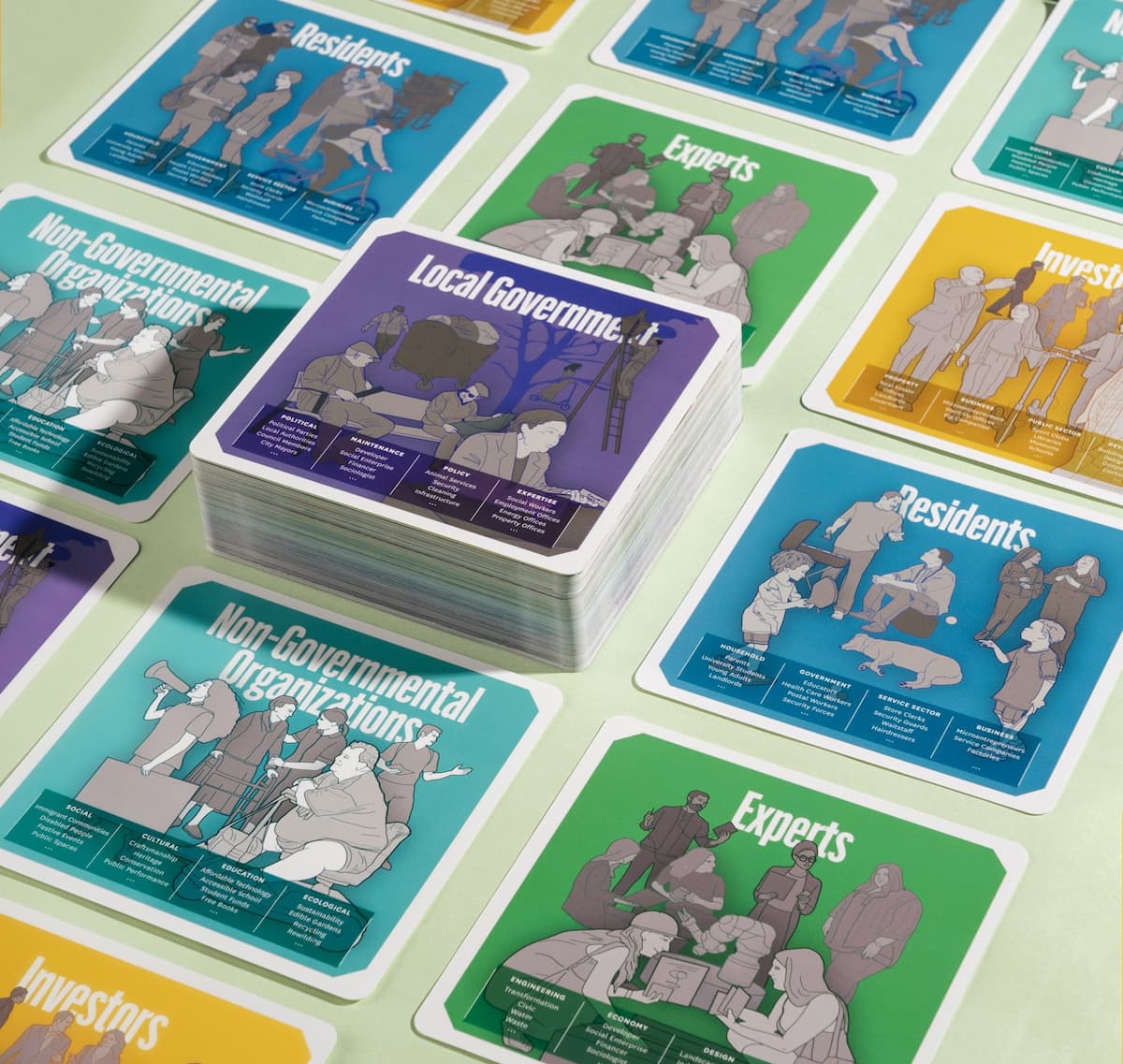
Oh, and it comes with a fold out gameboard; I can add this to my growing collection of learning games that use both cards and a board!
I love this commentary from the creators: “It's a creative and accessible way for anyone – whether a professional or a curious citizen – to explore, debate, and shape the future of our shared spaces.” Sounds like a prime example of a playful thing to think with!
Speaking of shared spaces…
Adventure Playgrounds
I first stumbled across the notion of “adventure playgrounds” a decade or so ago, while gathering examples for my keynote talk From Paths to Sandboxes. Christopher Alexander, in his timeless classic A Pattern Language, remarks on an aspect of play we’ve lost with safe, standardized playgrounds:
A castle, made of carton, rocks and old branches, by a group of children for themselves, is worth a thousand perfectly detailed, exactly finished castles, made for them in a factory.
…going on to propose this alternative:
Set up a playground for the children in each neighborhood. Not a highly finished playground, with asphalt and swings, but a place with raw materials of all kinds - nets, boxes, barrels, trees, ropes, simple tools, frames, grass, and water - where children can create and re-create playgrounds of their own.
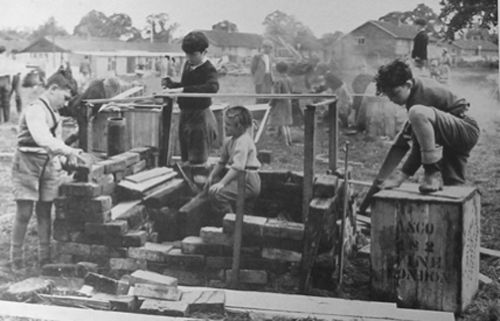
I never dug deeper into this topic, assuming there wasn’t much more to discover. My fascination was (and still is) with the idea of creating “sandbox” spaces—space with no formal rules or goals—where groups of people can play, make, and learn together. This is something we see in everything from Minecraft to how Montessori schools are set up to software such as Notion where there isn’t a single, specified use case.
What I didn’t know until last week—thanks to a series of posts from Adrian Hon—is that there is a long history of these adventure playgrounds around the world, following WW2 and peaking in the 1970s. This history is chronicled in the recently published book Playgrounds: An Experimental History by Ben Highmore, which Adrian has kindly summarized, with his own added reflections; which include… the connection to Minecraft and social patterns we see kids repeating, whether the dirt is real or digital!
As this isn’t a thing to think with, per se, I’ll provide this reflection question:
(Think conceptually, not literally! e.g. how might a traditionally transactional activity like shopping for a piece of video equipment be made more… playful and discovery oriented?)
🌀 How to speak squiggly! 🌀
Sometimes, all it takes is a slight change in language to shift our framing, or unlock new possibilities. I’ve shared in the past about thinking of your goals as quests, and how this one word change reframes goals as something more akin to an adventure. How to speak squiggly! [LinkedIn] is a small collection of these language shifts, picked up over years of career coaching experiences. From author Helen Tupper:
Over the past 10 years Sarah Ellis and I have created our own squiggly language for people to talk about careers. When these words are used in discussions about development they lead to more open and curious career conversations.
![Screenshot from the "How to speak squiggly" PDF. Text reads: Moves. As in… "What moves are you interested in making?" "Some of the career moves I'm interested in exploring are…" [TIP] Use 'moves' to replace the ladder-like word 'step'. As in "what's your next step?". Moves give people more options.](https://newsletter.themightymindsclub.com/content/images/2025/02/Screenshot-2025-02-09-at-12.37.42-PM-faecdc6f6ad281d7.jpg)
AfroRithms from the Future card deck
At last month’s Cardstock meetup, we heard from Dr. Lonny J Avi Brooks, who shared his AfroRithms from the Future card deck.
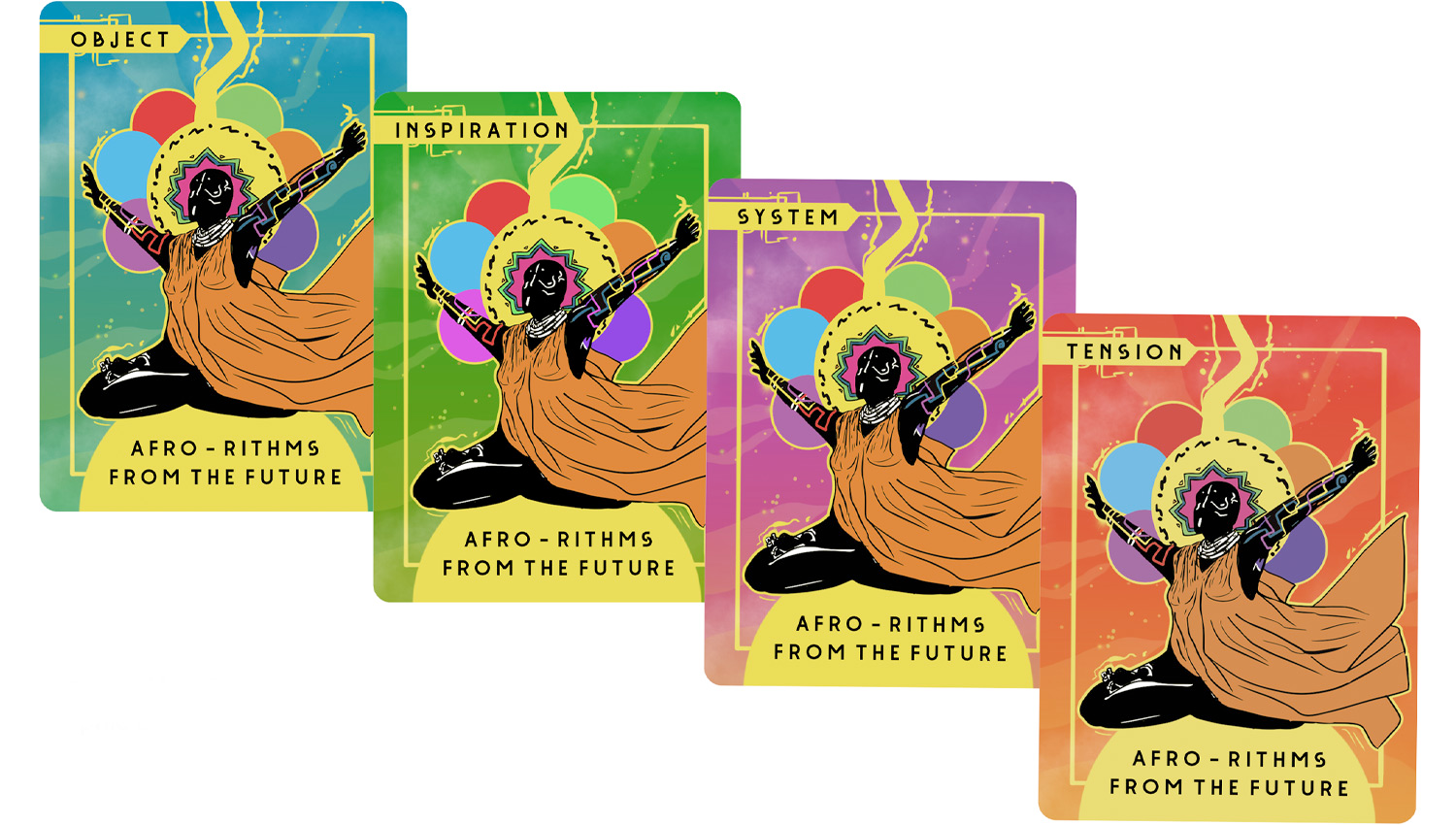
The card deck is similar in DNA to The Thing from the Future— ‘imagine a ‘thing’ based on these 4 criteria’—but designed to support Afrofuturist themes:
AfroRithms from the Future is a cooperative design, exploration, and storytelling game that centers Black and Indigenous perspectives. The objective is simple: Activate your radical imagination by talking about the future! The game ends when you as a collective have decided on the best artifact to share with the rest of the multiverse.
[There is a video recording of the meetup—as soon as it's posted, I'll update the web page for this issue of Thinking Things with a link!]
[Article] “The Great Cognitive Depression”
I’ve been thinking a lot about this article “The Great Cognitive Depression.” Published 6 years ago, a few minor details feel a dated now, but there are some amazing thought bombs in here, leading up to this banger of a provocation:
Imagine if we had an EPA for cognition.
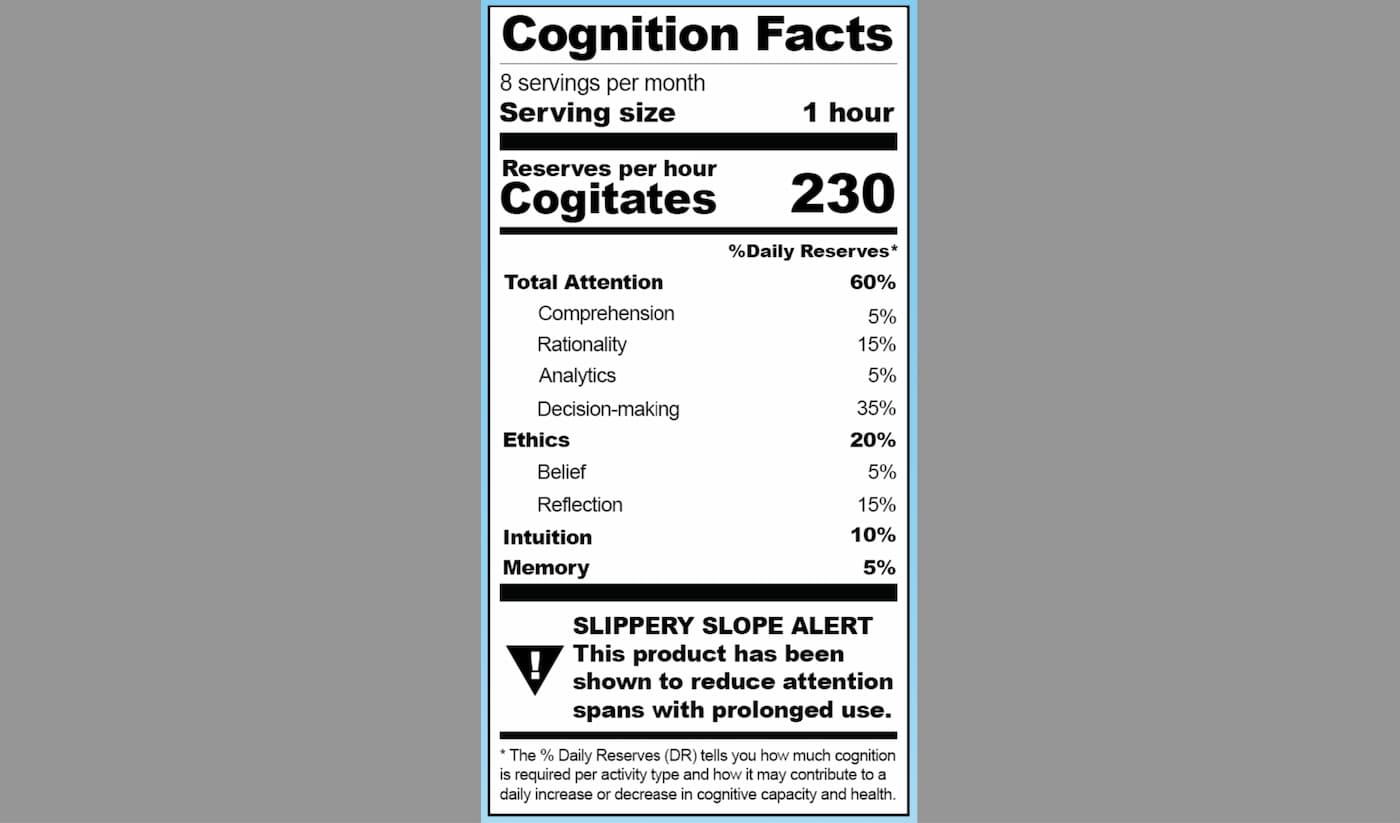
The paragraphs leading up this challenge lay out the case for safeguarding our attention, and our limited abilities to make difficult decisions:
We’ve evolved decision and scenario sciences to cope with increasingly complex issues—from the era of Darwin when he used the simple “pro/con” list to decide if he should get married (a non-trivial decision) to today’s advanced scenario-planning war games, science fiction foresight tools and other scalable management techniques.
A“pros/cons” list, scenario-planning games—these sound like playful things to think with! But the next paragraph puts a damper on these things:
This time, however, seems different—for a troubling simple reason. This time we face the rise of powerful new forces that undermine our very ability to react to these challenges and disruptions: our cognition itself is under attack. These toxic new forces leverage digital technology to exploit our behavioral biases, pushed by powerful financial incentives.
I can’t help but think of the tidal wave of the blatant lies and propaganda that have been on the rise over the past few weeks.
Our attention, our cognition, is a very precious resource. We need it to study, to work, to run our daily lives, to take small and big and life-changing decisions. And it’s a limited resource.
Which leads us to the provocation:
Imagine if we had an EPA for cognition. Industries that strip-mined human cognition would be penalized for creating cognitive “superfund” sites. They’d be required to provide transparency in the ways that they used the world’s cognitive resources and pay a de-cognition tax on any activities that destroy cognitive ability, or divert cognition from other uses—the equivalent of a carbon tax.
Anyway, lots to think about. Not a thing to think with, unless you want to run with the ‘Imagine…?’ provocation, and see with that leads. 🤪
BONUS: On the topic of technology and attention, this challenge to Design Distraction Free Computers makes for a nice pairing!
Periodic table of questions and connection
I usually skip past these “periodic table” posts, but given The Question Matrix I shared in the last newsletter, I thought it might be a fun exercise to pair that framework for reflecting on the “meta” structure behind various questions, with the Periodic table of questions and connection [LinkedIn] presented here:
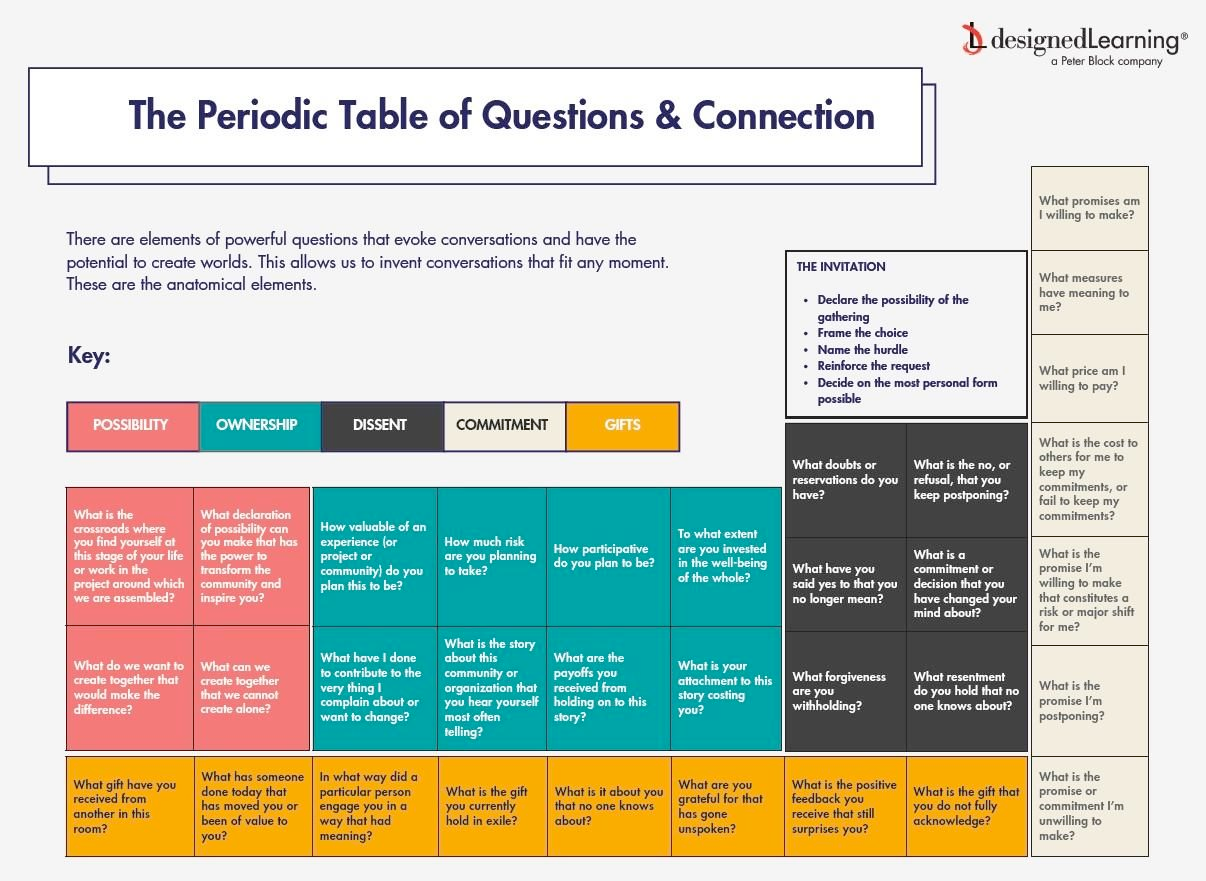
Random FUN stuff:
- I’m having too much fun playing with this color mixer / generator! (H/T Dave Gray)
- Uhm… Here’s a “game” you can play. Then, here’s some commentary from The Atlantic: “The Unhinged Browser Game That Explains How the Internet Went Wrong.”

